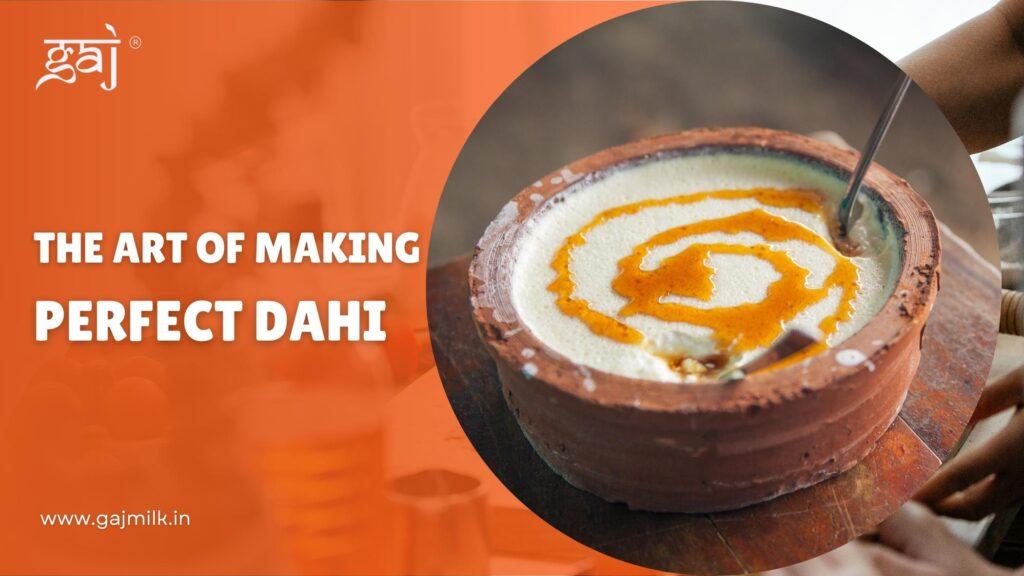
Introduction
Learn how to make thick, creamy, and delicious dahi at home with this easy and foolproof recipe. This guide covers everything. Dahi, more commonly known worldwide as curd, is an essential component of many cuisines, especially in the Indian subcontinent. The velvety texture and the delightful tanginess not only make it delicious on its own but also versatile in a myriad of dishes. But how do you achieve the perfect Dahi Curd at home? Let’s journey into the art of crafting that flawless bowl with Gaj, a renowned dairy product manufacturer.
1. Choosing the Right Milk:
Before you delve into the process, it’s essential to select the best quality milk. Fresh, whole milk works best, but if you’re aiming for a lighter version, you can use toned milk. Gaj, known for its premium dairy products, offers milk that is fresh and ideal for making the perfect Dahi Curd.
2. Boiling the Milk:
Empty the milk into a weighty lined dish and heat it to the point of boiling. Permit it to stew for two or three minutes. This step ensures the removal of any impurities and preps the milk for fermentation.
3. Cooling to the Right Temperature:
After boiling, let the milk cool to a lukewarm temperature. The right warmth is crucial. Too hot, and it may kill the essential bacteria. Too cold, and the fermentation might not kick in. A good rule of thumb is that the milk should be warm to touch, similar to a baby’s bath water.
4. Adding the Starter Culture:
Here’s where the magic begins. Take a teaspoon of store-bought Dahi Curd or a previous batch from home and mix it into the lukewarm milk. If you’re a beginner, you might consider using Gaj’s Dahi Curd as your starter. Its consistency and rich flavor make it an excellent choice.
5. Letting it Ferment:
Transfer the milk to a ceramic or glass bowl. Cover it with a lid or a clean cloth, ensuring it’s not airtight. Place the bowl in a warm, draft-free place. In colder regions, you can wrap the container with a warm cloth or place it inside an oven (with the oven switched off, of course) to maintain a consistent temperature.
6. Checking the Consistency:
After about 6 to 8 hours, check the Dahi Curd. It should have set to a firm yet creamy consistency. If it’s still liquid, allow it a few more hours. The fermentation time can vary based on the ambient temperature.
7. Refrigeration:
Once set, move the Dahi Curd to the refrigerator. Chilling stops the fermentation process and sets the texture, ensuring you don’t end up with overly sour curd. It’s ideal to consume it within the next 24 to 48 hours for the best taste.
8. Troubleshooting Tips:
If your Dahi Curd is too runny, it might be due to the starter’s quality or the milk not being warm enough during fermentation.
Overly sour curd often results from prolonged fermentation. Adjust the time based on your taste preference.
Conclusion
Achieving the perfect bowl of Dahi Curd at home is a combination of art and science. While the steps are straightforward, mastering the nuances can take a couple of tries. However, with high-quality milk from Gaj and a bit of patience, you’re well on your way to savoring the creamiest, most delicious homemade Dahi Curd. So, the next time you yearn for that perfect bowl, remember that you hold the power to create it in your kitchen.
So, the next time you indulge in Gaj’s dairy delights, remember the perfect blend of nature, science, and dedication that goes into each bite.
Keywords:
curd, Dahi Curd, Desi Ghee , Gajmilk



